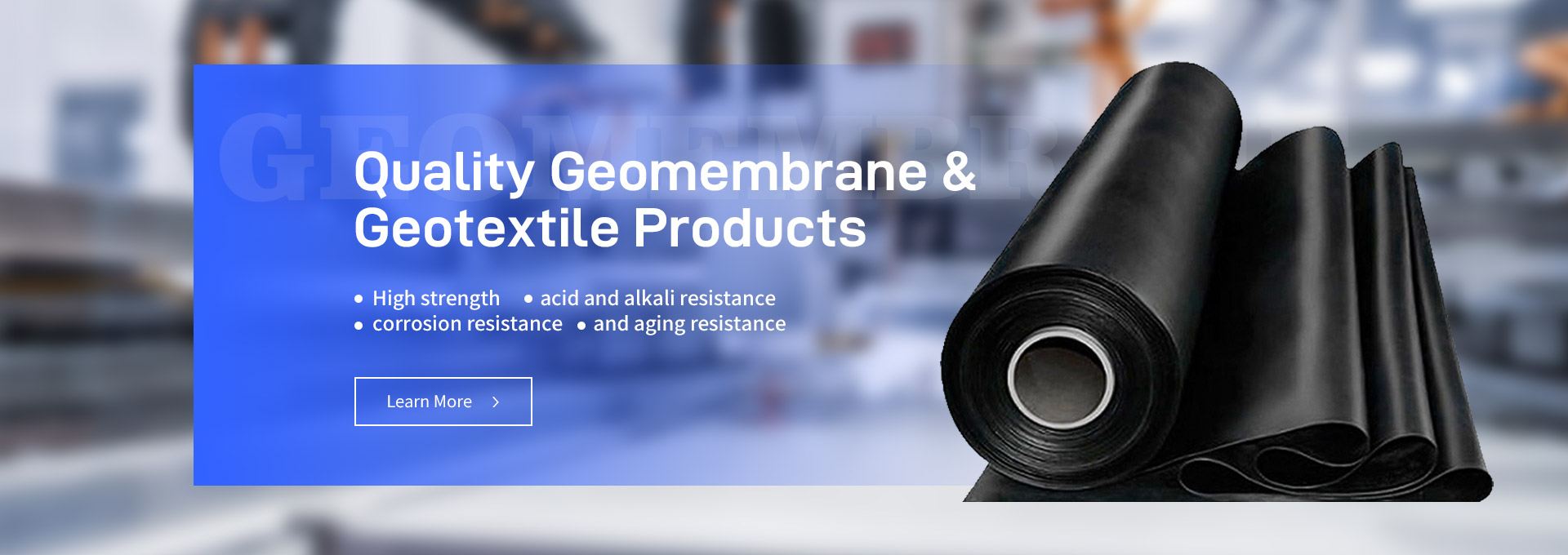As water conservation becomes increasingly crucial, water storage pond geomembranes have gained popularity as essential liners for agriculture, industrial use, and environmental projects. A high-quality geomembrane prevents water loss and contamination, safeguarding valuable water resources. However, choosing the right geomembrane can be challenging due to the variety of materials, thicknesses, and durability options available. This guide will explain how to select the best geomembrane pond liner to meet your needs.

1. What is a Water Storage Pond Geomembrane?
A water storage pond geomembrane is a high-density polymer liner designed to prevent leaks by covering the bottom and sides of ponds or reservoirs. It provides an effective barrier against water loss and pollution, ensuring water storage is secure and environmentally friendly. Geomembranes are widely used in various sectors, including agriculture, mining, and water treatment. They are ideal for applications like agricultural ponds, industrial waste containment, rainwater harvesting, and waste treatment lagoons.
2. How to Choose the Right Geomembrane Material
The material of the geomembrane is critical because it affects performance, durability, and suitability for different applications. Here are the three most common materials for durable geomembrane for water storage:
HDPE Geomembrane (High-Density Polyethylene)
HDPE geomembranes are the most widely used material for their strength, chemical resistance, and long service life. They are perfect for agricultural, industrial, and environmental uses, especially in high-corrosion environments like mining or waste ponds.
LDPE Geomembrane (Low-Density Polyethylene)
LDPE geomembranes are more flexible, making them easier to install and weld. This material is suitable for smaller agricultural ponds or areas with shifting soil where flexibility is needed. LDPE geomembranes are cost-effective and great for applications that don’t require extremely high strength.
PVC Geomembrane (Polyvinyl Chloride)
PVC geomembranes offer high tensile strength and flexibility, making them ideal for complex terrains. They resist punctures and work well on uneven or rough surfaces. However, they are less durable under high temperatures or UV exposure, so they are best for agricultural ponds or moderate climate zones.
Choosing Tips:
For long-term projects with high resistance requirements, HDPE is an ideal choice.
For smaller, budget-friendly projects, LDPE provides flexibility and value.
For rough terrain with puncture risks, PVC is a reliable option.
3. Choosing the Right Thickness for a Geomembrane Pond Liner
Thickness influences a geomembrane pond liner’s durability, impermeability, and tensile strength. Here are some common thickness options and when to use each:
0.5 mm Thickness
This thickness is suitable for temporary projects, such as small rainwater ponds or construction sites. Although thin and low-cost, it offers limited puncture resistance and is not recommended for long-term use.
0.75 mm Thickness
This mid-range thickness works well for smaller farm ponds and domestic water storage applications. It provides better puncture resistance than thinner liners, making it a cost-effective solution for light-duty, semi-permanent projects.
1.0 mm Thickness
This standard thickness is ideal for agricultural and industrial ponds. It balances durability and cost-effectiveness, providing excellent tensile strength and impermeability. This thickness is suitable for projects where you need a reliable, durable geomembrane for water storage.
1.5 mm Thickness or More
For high-stress applications like mining ponds, chemical waste containment, or long-term water reservoirs, thicker geomembranes (1.5 mm or more) are recommended. They offer exceptional puncture resistance and durability, ensuring secure containment in demanding environments.
Choosing Tips:
For high-stress, long-term applications like industrial ponds, choose a 1.5 mm or thicker geomembrane.
For general agricultural or commercial ponds, 1.0 mm provides ample strength and longevity.
For small, temporary applications, 0.5-0.75 mm may be sufficient.
4. Durability and Service Life Considerations
A high-quality, durable geomembrane for water storage can last decades when properly installed and maintained. Here are the main factors affecting durability:
UV Resistance
Geomembranes used outdoors need strong UV resistance to prevent aging and cracking from prolonged sun exposure. HDPE and PVC offer superior UV resistance, making them ideal for outdoor applications. For outdoor projects, choose a geomembrane with UV protection for long-lasting performance.
Chemical Resistance
Chemical exposure is another durability factor, especially in mining or industrial settings. HDPE geomembranes are highly resistant to acids, alkalis, and other chemicals, making them ideal for areas where contaminants are present.
Tensile and Puncture Resistance
During installation, geomembranes are subjected to tension and pressure, especially on rough or uneven surfaces. Thin geomembranes may tear under stress, so choosing a thicker liner (1.0 mm or more) will enhance its puncture resistance. A thicker geomembrane pond liner provides added durability, especially in high-stress applications.
Regular Maintenance
Regular inspection and maintenance, such as checking for tears or punctures, can significantly extend the life of your liner. In industrial or chemically active environments, monitoring your geomembrane’s condition is essential to maintaining performance.
Choosing Tips:
For outdoor use, choose a UV-resistant material like HDPE or PVC.
In chemical-heavy environments, HDPE offers the best resistance.
For high-tension applications, a thicker liner (1.0 mm or more) ensures durability.
5. Summary
To select a high-quality water storage pond geomembrane, consider material, thickness, and durability, while matching them to your specific application needs:
Material Choice: HDPE suits long-term, high-corrosion environments; LDPE is ideal for small, flexible applications; PVC offers puncture resistance for rough terrain.
Thickness Choice: Choose 1.5 mm or more for heavy-duty applications; 1.0 mm for most agricultural or industrial ponds; and thinner options (0.5-0.75 mm) for temporary uses.
Durability Factors: For long-term projects, choose UVand chemical-resistant materials with the right thickness, and implement regular maintenance.
A reliable, durable geomembrane for water storage will help ensure effective water conservation and environmental protection in your project. For more options, consulting with a geomembrane wholesaler can help you find customized solutions and guidance on installation and maintenance, giving you access to the best products and support for your unique needs.

